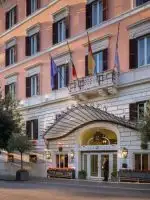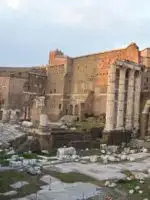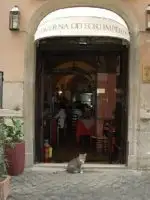Once upon a time, this nearly 2,000-year-old structure was home to Rome’s gladiator matches and special events. It is impossible to stand before the nearly intact ruins and not marvel at its grand size and history. The structure began construction in AD 72 and opened its gladiator games in AD 80, with 55,000 seats. Spectators entered through 76 numbered arches to watch what would be more than 9,000 animals and gladiators be killed as sport.
The area outside the Coliseum, however, is heavily trafficked by both pedestrians and motor vehicles and admittedly made us quite nervous — you’ll want to hold onto hands before entering. The attraction is also so popular that ticket lines can last well up to an hour, and it’s highly recommended you purchase tickets in advance to skip the lines. Ticket sellers will approach you in line offering a chance to skip the lines for a small fee, but purchasing in advance helps you skip these middlemen and their fees. Tickets may also be purchased at the Forum or Palatine, where lines are shorter. Fight through the traffic and crowds to see the Coliseum; it’s well worth a visit. There is an elevator to make it easier for families with strollers or wheelchairs to visit, but it is still best to be prepared to climb some stairs. Wear comfortable shoes!
The Coliseum is open seven days a week, often opening at 8:30 a.m. (except September through the end of fall, when it opens at 9 a.m.) In the winter, it closes at 4:30 p.m., in the summer 6:30 p.m. and in the spring 7:15 p.m. Guided tours are available.




















